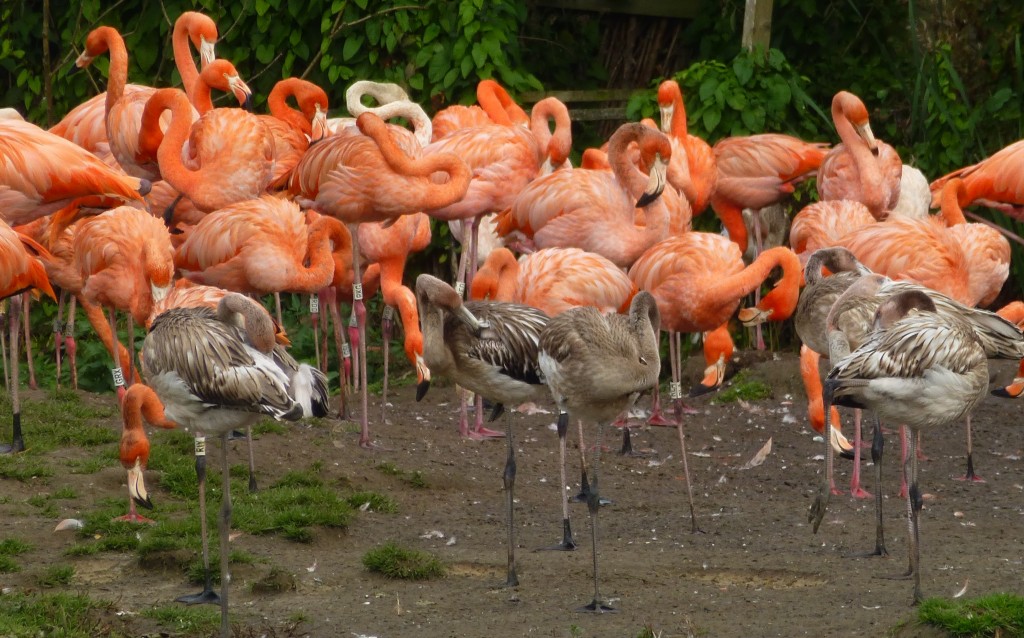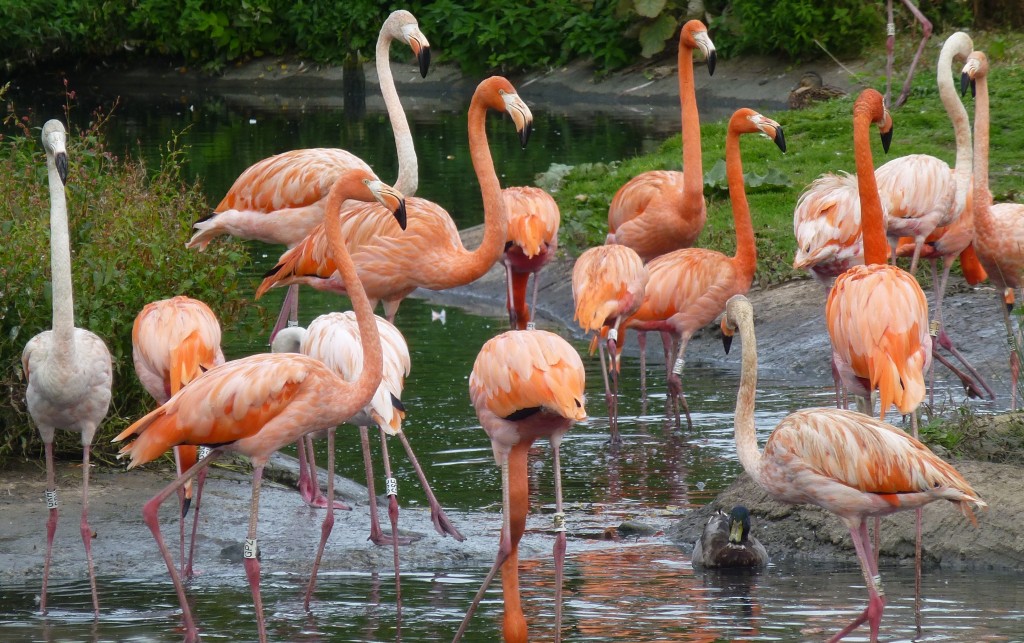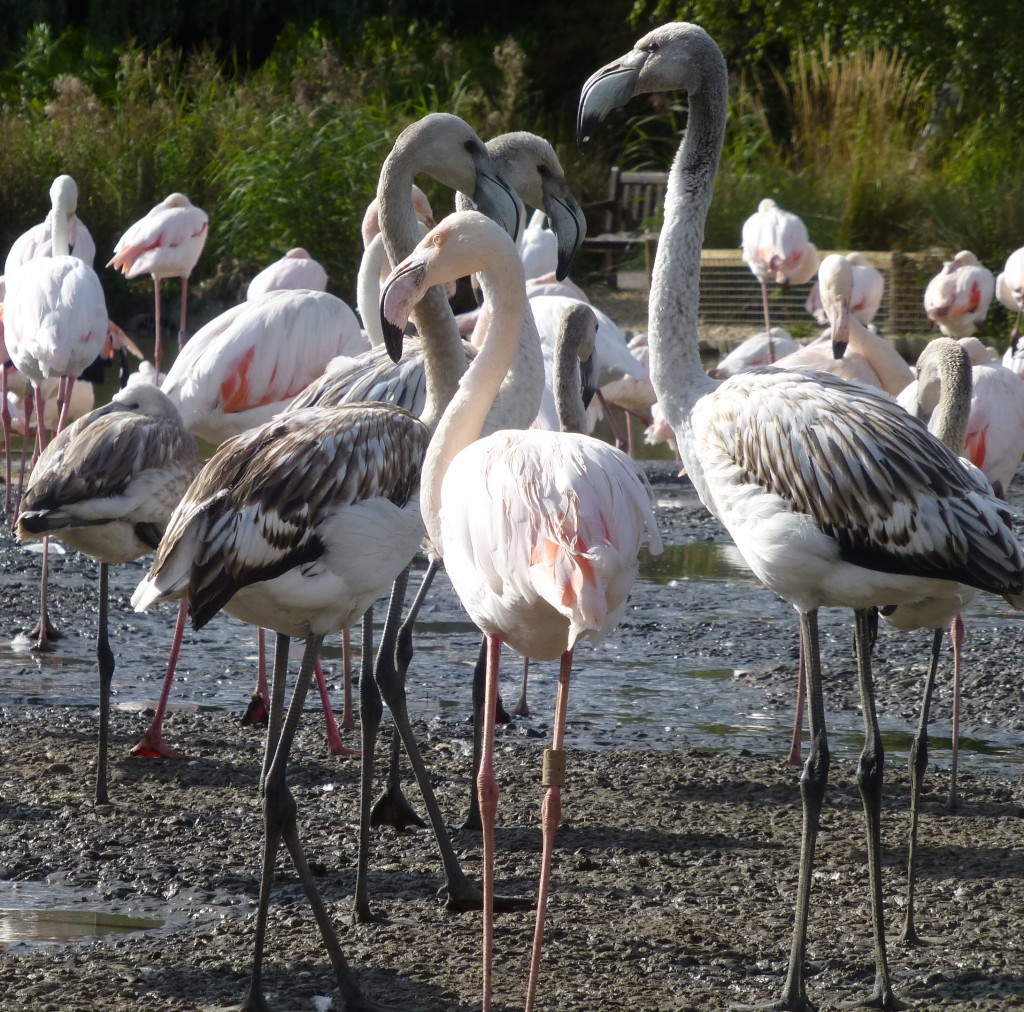Turning pink(er) gradually.
On your next visit to WWT Slimbridge, take a few moments to stand and watch the different flamingo chicks that are in and around some of the pens. The chicks are growing up fast and they are starting to get the odd splash of pink. This time next year they will resemble their parents even more so, but it will be a few years before they are quite as vibrant as mum and dad.
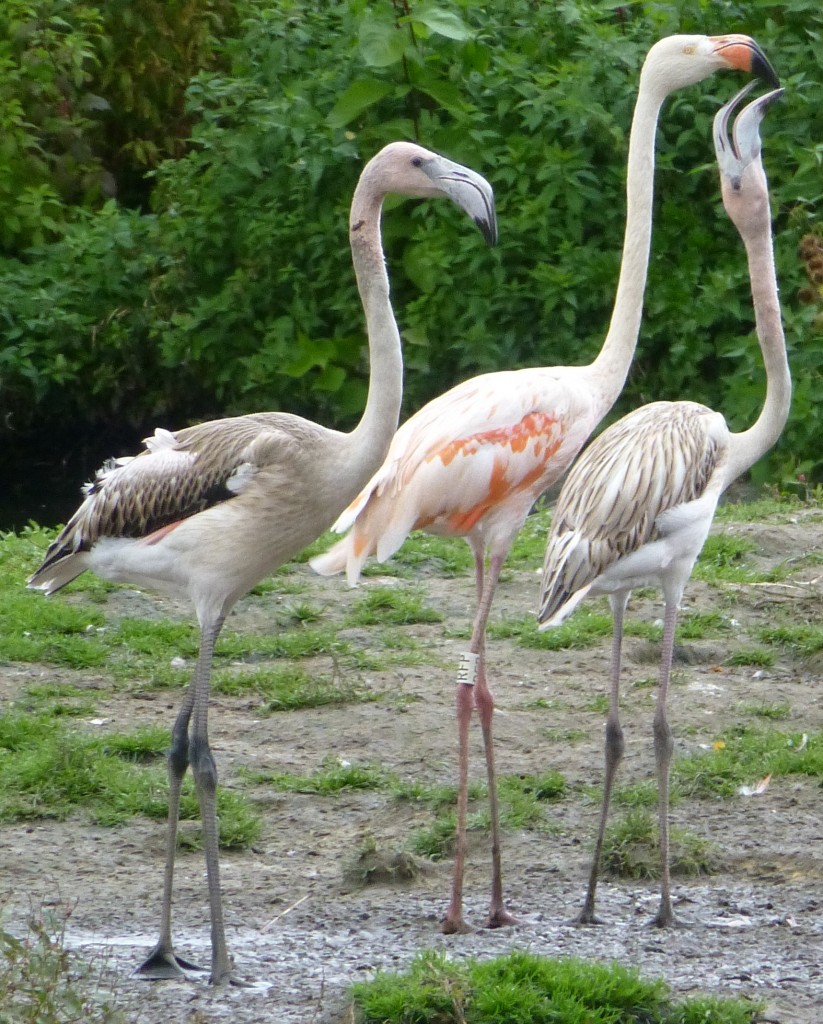 Feed me now! A young Caribbean flamingo demands a meal from its parent. Nearly as large as the parent bird, this chick will be crop fed for another few months before it is able to feed completely independently.
Feed me now! A young Caribbean flamingo demands a meal from its parent. Nearly as large as the parent bird, this chick will be crop fed for another few months before it is able to feed completely independently.
The Andean Pen contains chicks from three species (Caribbean, Chilean and greater) and this is a good spot to stop and see how they are both similar and also very different. The greater and Caribbean juveniles tower over the smaller Chilean, despite being of a similar age (these birds all hatched last summer). Chilean flamingos are naturally smaller, but they are also slower growing too.
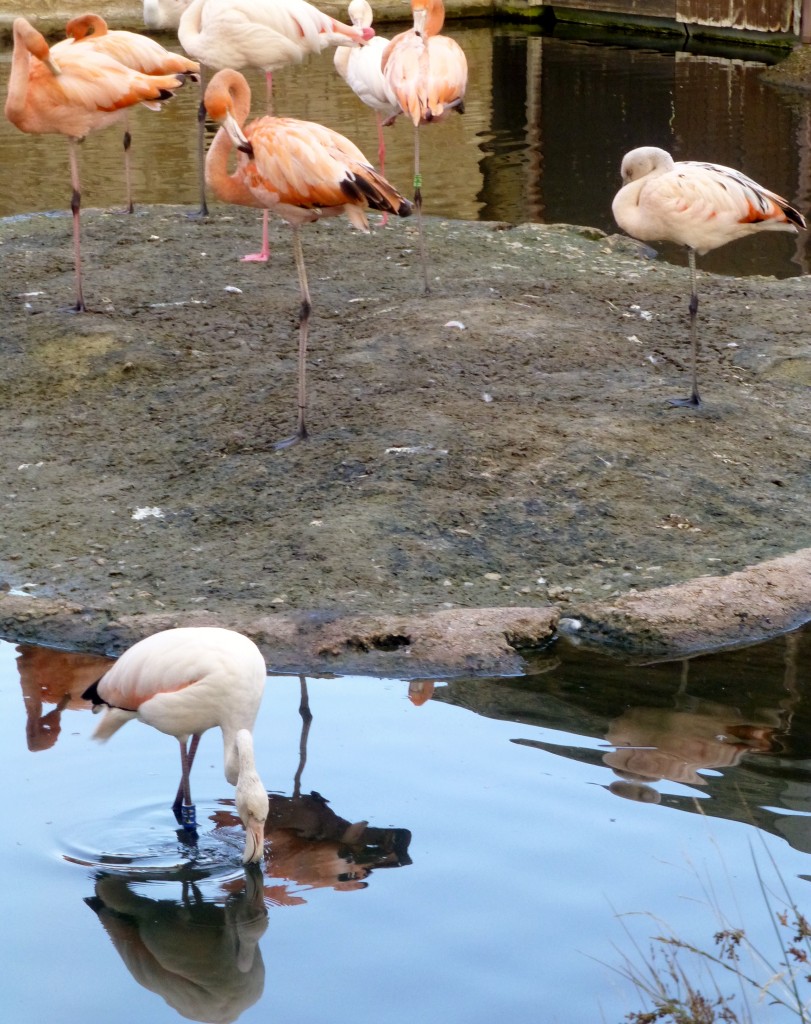 A young greater flamingo (in the pool), a young Chilean flamingo (resting on one leg) and a young Caribbean flamingo (preening). All are starting to get some aspects of their adult colours.
A young greater flamingo (in the pool), a young Chilean flamingo (resting on one leg) and a young Caribbean flamingo (preening). All are starting to get some aspects of their adult colours.
The young Caribbean flamingos in this enclosure are already the brightest, as would be expected I guess, but the young Chilean is not far behind. You can already see the different types of pink that give each species its unique colours; the Chilean is a much more subtle salmon pink compared to the brighter and more vivid orange-red of the Caribbean. The chick's feathers will accumulate more and more pigment as they grow, develop and moult into each new set of feathers, and it is interesting to watch them as they change colour with each passing week.
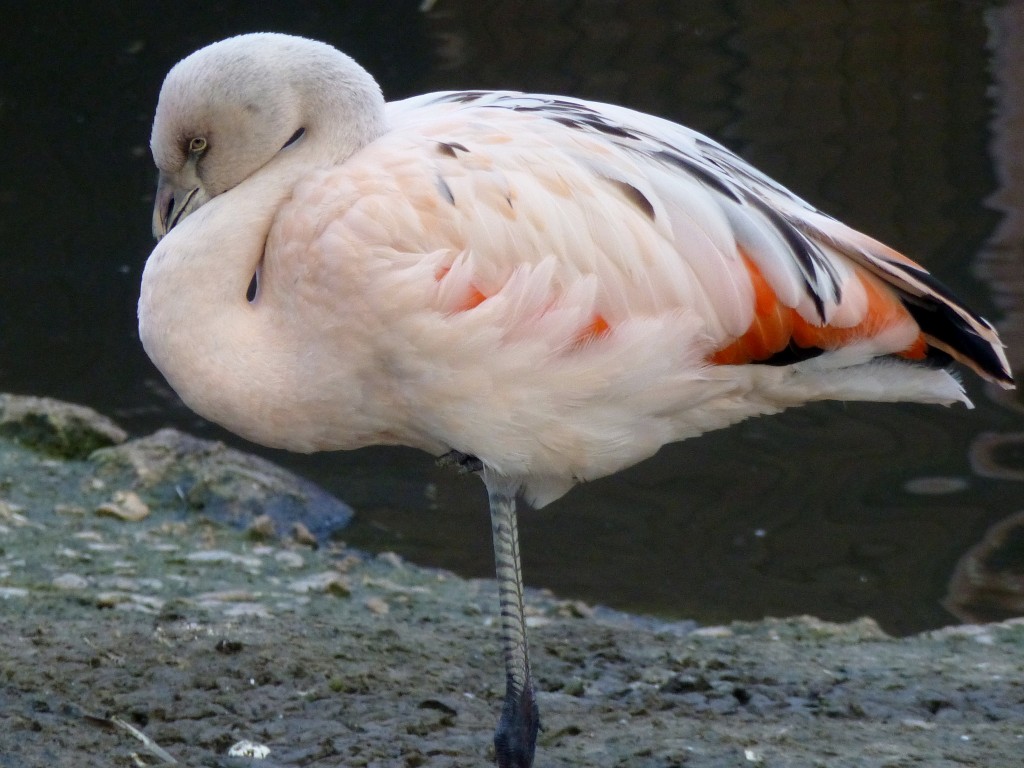 A young Chilean flamingo with classic "teenage" flamingo grubby face and dirty grey legs. Not quite as smart as an adult. And still showing some dark grey feathers from its first "proper" feathers that came through after its down had gone.
A young Chilean flamingo with classic "teenage" flamingo grubby face and dirty grey legs. Not quite as smart as an adult. And still showing some dark grey feathers from its first "proper" feathers that came through after its down had gone.
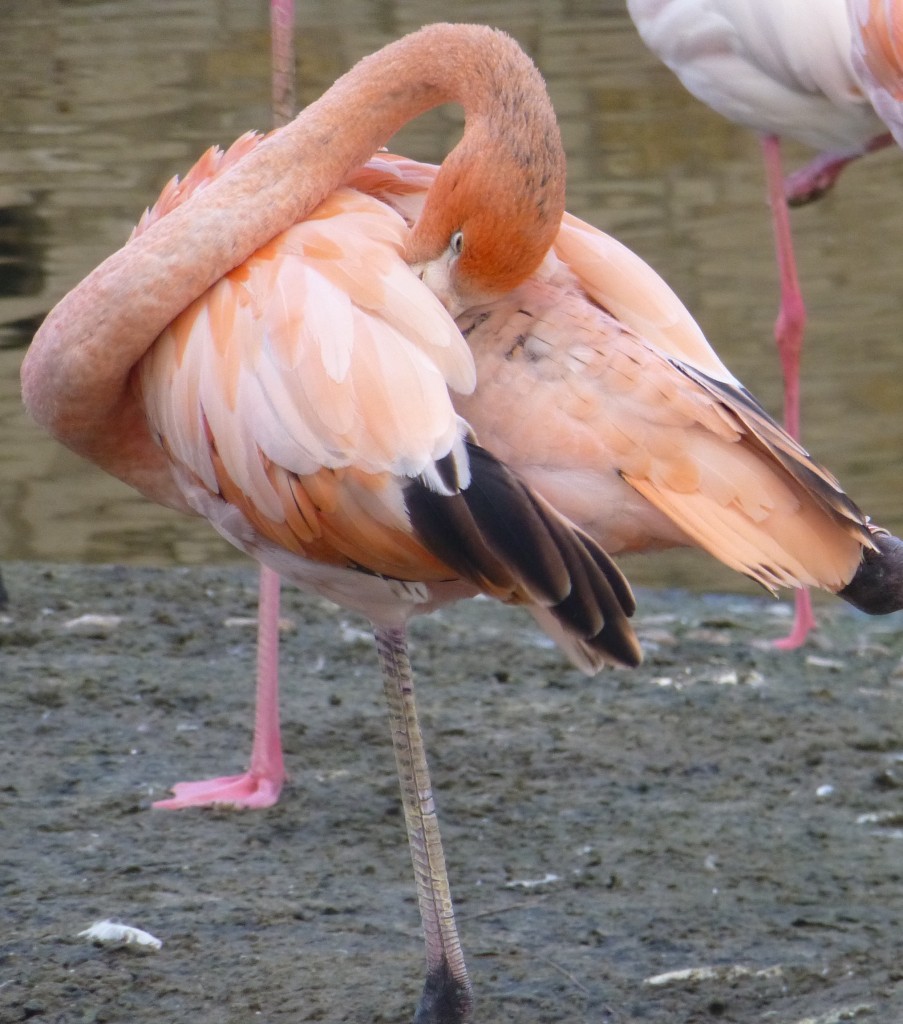 Spot the same dirty face and legs as in the Chilean, but the overall look of this bird is more "adult like". This young Caribbean has lost nearly all of its baby feathers and now just needs to smarten up around the edges to blend in with an adult flock.
Spot the same dirty face and legs as in the Chilean, but the overall look of this bird is more "adult like". This young Caribbean has lost nearly all of its baby feathers and now just needs to smarten up around the edges to blend in with an adult flock.
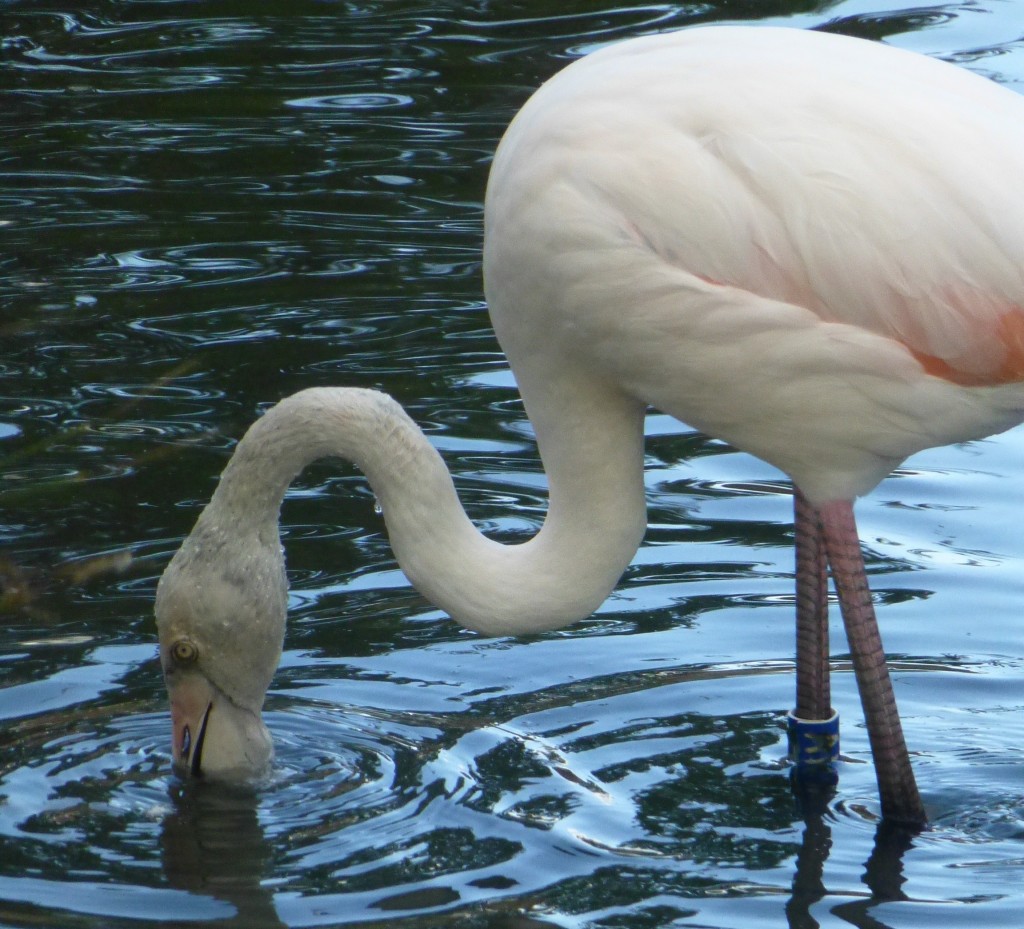 This juvenile greater is probably the one that looks the most grown-up. It still has a dirty face (see the grey plumage visible on its head and upper neck) but its legs are pinker and its body feathers are all but adult-like too. Greater flamingos don't accumulate the same types and amounts of carotenoids as the other species, so they don't take as long to turn from grey/brown chicks into pale pink adults.
This juvenile greater is probably the one that looks the most grown-up. It still has a dirty face (see the grey plumage visible on its head and upper neck) but its legs are pinker and its body feathers are all but adult-like too. Greater flamingos don't accumulate the same types and amounts of carotenoids as the other species, so they don't take as long to turn from grey/brown chicks into pale pink adults.
You can get some really good comparisons of different plumage colour in the Caribbean flock at present. Lots of white, worn-out parents, compared to some very bright birds that did not breed this year, and the chicks themselves now all in their brown suits of their first proper feathers that have come through to replace their down. These brown feathers will gradually be pushed out by pink ones over the coming months.
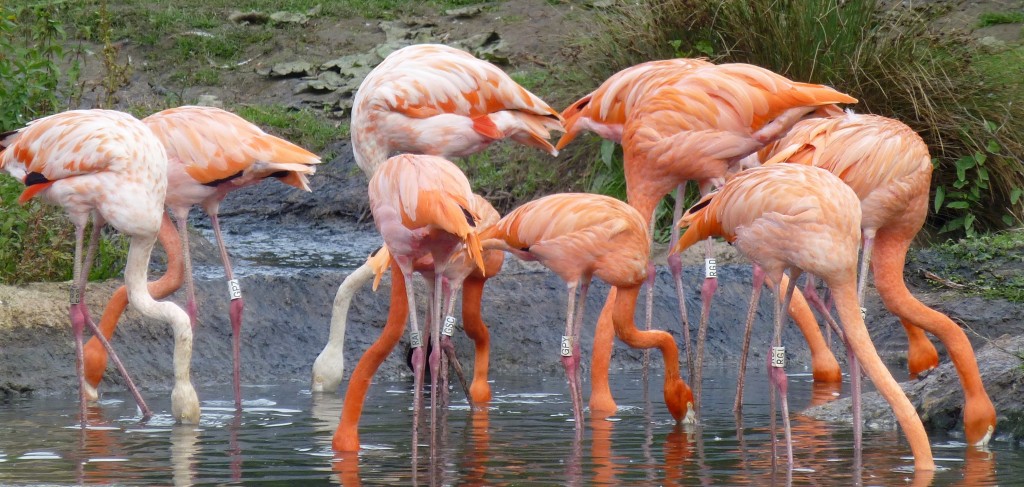 The colour change (post-breeding) is most dramatic in this species. Don't worry this is perfectly normal and you will see the same faded parents in wild flocks of this species too. What I like most about their white plumage is suddenly how vivid their yellow eyes become. Take a look with your binoculars...
The colour change (post-breeding) is most dramatic in this species. Don't worry this is perfectly normal and you will see the same faded parents in wild flocks of this species too. What I like most about their white plumage is suddenly how vivid their yellow eyes become. Take a look with your binoculars...
And finally, just to show you what a good breeding season it has been, here are some very chunky greater flamingo chicks down in Flamingo Lagoon, towering over an adult female bird! Their parents have obviously done a very good job of rearing them to be big and strong. Happy flamingo watching!
